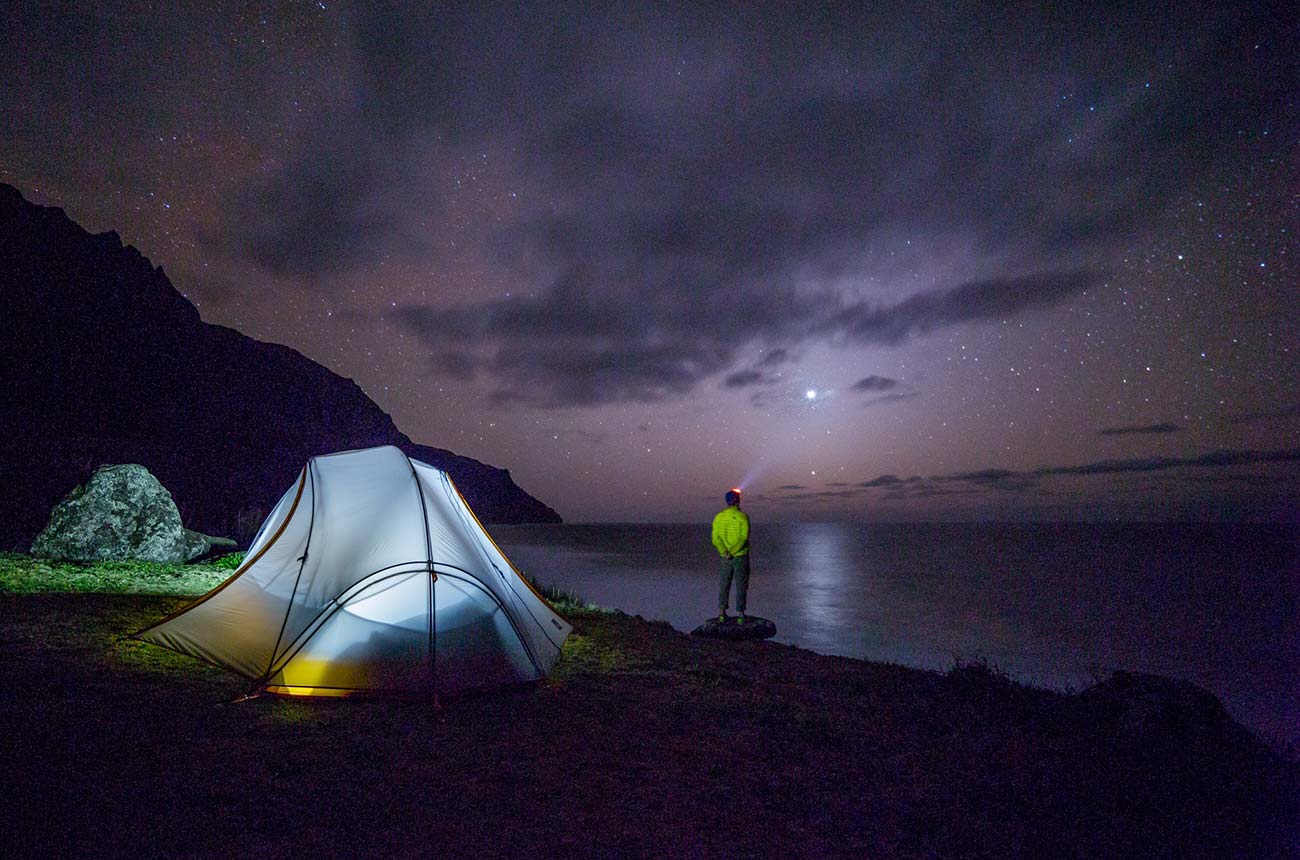
Hooking Your Audience Early - Rethinking Filmmaking
Pre-release hype for Escalator funded feature film Orphans & Kingdoms won’t start until next year but already more than 330 people are gunning for its success. A well-planned strategy by writer/director Paolo Rotondo and producer Fraser Brown, including a social-media campaign, crowdfunding and a full-time producer of marketing and distribution, paid off. By Carolyn Brooke.
From the inkling of the idea of the Escalator funded film Orphans & Kingdoms through to its post-production, the project was designed to succeed. Not only was the budget custom-made to fit Escalator’s $250,000 grant but before any funding was guaranteed a Facebook page and a website had already been set up. The challenge for writer/director Paolo Rotondo and producer Fraser Brown was to not just make a micro-budget, feature-length film but to make a good one, a film that people wanted to watch. They knew early audience engagement was key to this, Fraser says.
“Right back at the start we said ‘every decision is based around a budget of $250,000’ and we asked ourselves what we could do to make this project successfully.”
A strategy involving a social-media campaign and donations of time, resources and money (keeping in mind this is a harder task for features than it is shorts) would see the creation of various stakeholder groups for the film that was shot on Waiheke Island in July. Aside from the Waiheke locals who supported the project, the 30 crew who invested time and the 300 or so Pledge Me supporters who raised nearly $30,000 for post-production work, Random Films and Flying Fish also each put $50,000 into the film.
Owning your audience
With no pressure from Escalator’s backer New Zealand Film Commission around distribution, Fraser and Paolo quickly realized a shift away from traditional filmmaking was needed in order to make a film that people wanted to watch.
“When we first got into this business you didn’t think about sales, marketing and distribution as a filmmaker, it was something that someone else did,” he says.
“The problem is if you’re not thinking about how you’re going to connect with your audience right from the start then it might be that you make a film that no one ever watches.”
The pair brought in producer Hazel Gibson as a full-time producer of marketing and distribution for eight weeks. Her role, which Fraser believes is a first for NZ, was to further identify the audience and to reach out to it. Hazel drove a social-media campaign that included daily updates among Facebook, Twitter, blogs and Instagram along with the crowdfunding platform PledgeMe.
Weekly video production updates were posted during filming giving followers visual and interesting information about the production’s progress. Photos and behind the scenes updates were also posted. Fraser found visual-based platforms like Instagram worked well as people tend to be drawn to pictures over words.
“Filmmakers need to have a much more direct relationship through dialogue and communication with their audience.”
People pledged between $5 and $5,000 through PledgeMe and despite nearly $30,000 being raised, the time, money and effort that went into it made for a tricky investment. The emphasis was on audience engagement rather than the platform being a pure fundraiser.
“Those 300 or so people shifted from passive followers to active patrons of the project and they are more valuable than 15,000 Facebook followers who aren’t engaged.”
These 300 people now have a vested interest in the film doing well and the flow-on effect from their wider networks could be significant.
While the social media campaign was a success, Fraser says in hindsight he’d put more resources into getting media publicity next time.
“I think there was a story that was missed, we left the PR side of things too late and we underestimated how hard it would be.”
Thinking small to think big
Most people can sustain cut backs for a small amount of time when it comes to doing shorts, freebies or other low budget jobs, but it’s much harder to do for feature-length films.
Fraser says a key difference is that it wasn’t a project they were working on then later decided to get funding. Orphans & Kingdoms was completely conceived with a micro budget in mind. It’s definitely much harder to shoehorn a project into a small budget later on.
“It is quite a big step for filmmakers because traditionally it isn’t the way you’re taught to think when conceiving a project,” he says.
“It can be almost impossible in this environment to get funding and you have to think very practically, especially if you’re going to spend several years on a project.”
Of course there were compromises, some massive, but they went into the project eyes wide open. Paolo and Fraser are both also actors and did the casting themselves, but it’s not a job they’d be lining up to do again.
“While it was interesting and rewarding, it was also challenging and took us away from other things.”
The 21-day shoot was also a challenge, especially as it was managed with almost no overtime.
“We did it within 21 days because everyone knew from the outset that was what we had to do.”
Community at heart
Long-time Waiheke resident Paolo came up with the idea for the film about two years ago. Fraser and Paolo had worked together on the NZFC funded short film Dead Letters and the timing worked well to do another project.
Fraser says a sense of community was at the heart of the project from the beginning and the PledgeMe supporters were an extension of the Waiheke and film communities that were brought in much earlier.
“It was something we established right at the start with our whole methodology, people love to be part of a community,” he says.
“You can like something on Facebook but it doesn’t make you part of a community - this is a much higher level of engagement.”
Prizes and rewards for PledgeMe supporters included donated offerings like dinner at Waiheke’s The Oyster Inn and a car rental/ferry ride from Sealink and Jucy Rentals. Two pledges of $5,000 each were for executive producer credits in the film and invites to premiers and screenings. No equity was offered through the crowdfunding.
“We made a decision to delay the PledgeMe campaign until we were actually shooting but then we really hammered it,” he says.
“It was a risk given the limited timeframe and that’s why we absolutely had to have Hazel full-time because we didn’t have the time to do it.”
Having entertaining material to post is a key to crowdfunding, Fraser says. It’s about providing something tangible with an aim to involve people in the process. He also blogged for Hope for Film, which is run by The San Francisco Film Society’s executive director Ted Hope.
“The idea was to set up the communities beforehand and then we really leveraged them to get our communication out.”
Partnering with sponsors that had big networks and similar target markets like the Gotta Love NZ campaign, was another part of the strategy. Gotta Love NZ’s Facebook page had 215,000 followers.
Crew investment
Crew were viewed as investors and all 30 crew (except a couple of unpaid interns) were paid the same. It was $180 a day from runners to HODs. Experience and expertise have been taken into account in the net proceeds model, which kicks in when the movie makes money, with three different payment tiers.
“The crew attitude was amazing, but we were very careful with selecting crew especially HODs – we essentially auditioned them and made our decisions based on a combination of skills and experience for the job equally weighted against personality and a willingness to invest themselves in the project.”
An emphasis was placed on people who would just get stuck in to do the job and who were willing to embrace the nature of a low-budget project including doing everything from job sharing to bunking in with others.
On the subject of job sharing, Fraser also has a role in the film as officer Mike Layton. Paolo has a walk-on cameo.
Strategic learnings
Crowdfunding and social-media campaigns won’t work for all projects but there is no doubt this type of thinking is growing among filmmakers.
“This model is going to be essential for creatives to maintain more control and ownership of their work.”
But the reality, he says, is connecting with an audience and raising money is much harder than you think it would be. He’d begin the process even earlier if he did again.
“The more we do it as a filmmaking community and the more we share it, the easier it gets because it’s quicker to learn,” he says.
Also, having an existing audience and not starting from “ground zero” would be a bonus second time around.
Maintaining momentum for the campaign around Orphans & Kingdoms has been a challenge. Hazel’s eight weeks of employment covered three weeks pre-production, four weeks for the shoot and one week post.
“Now the hard part kicks in, building on the work we set up during the shoot to take us into the release which is arguably of course the most important part.”






































